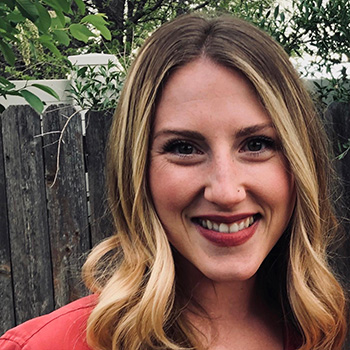Q&A With Jordan Burns: A Community-Driven Approach to Energy Resilience
Jordan Burns is a risk and resilience researcher helping communities reach their energy goals through the Department of Energy's Energy Transitions Initiative. In this interview, Burns shares how she came to the National Renewable Energy Laboratory (NREL) and some of the lessons she’s learned for effectively engaging stakeholders. She, and others in the Resilient Systems and Engineering Group, use a community-driven approach to understand placed-based resilience solutions that can be incorporated into local strategic clean energy plans.

What is the Energy Transitions Initiative, and what is your role in leading the project?
The Energy Transitions Initiative supports remote, island, and islanded communities seeking to increase the resilience of their energy systems. NREL and other labs within the DOE system provide technical assistance and resources for communities in all phases of an energy transition—from clean energy planning to project design to execution. In my role, I try to increase access to resilient energy by improving stakeholder engagement processes, streamlining project scoping, and communicating the benefits of resilient energy to broad audiences within the program.
Talk about your journey to get to NREL.
I studied earth science and geography at the University of Arkansas in my hometown for both undergraduate and graduate school. After moving to Denver in 2015, I spent five years working on spatial risk and resilience projects for the Federal Emergency Management Agency (FEMA). Natural hazard resilience perfectly combines my interests in human and physical geography. Moving to NREL provided me an opportunity to work on broader resilience issues at an institution driven by a powerful scientific mission.
Can you tell us a story of a community you supported this year?
The Energy Transitions Initiative Partnership Project (ETIPP) is helping a utility provider analyze the feasibility of an electrified ferry fleet on Ocracoke Island, North Carolina. This project will help the people of Ocracoke decrease fossil fuel reliance while maintaining access to critical evacuation routes during hurricane season. In Wainwright, Alaska, ETIPP experts are providing retrofit recommendations for a tribally owned community center to ensure consistent, affordable operation of an important gathering space. The community center also serves as an emergency shelter.
What do energy researchers and engineers need to know about communities when providing technical assistance?
Community planners need to understand tradeoffs. They want to know which options are open to them, as well as the costs and benefits that would occur in each decision pathway. We need to get to the heart of that question and match the complexity of our technical work to the complexity of the decisions being made.
If our community contact is a mayor, for example, the mayor needs to be able to justify their decision to a broad audience that may not have time to engage with the technical details of analyses. We need to make sure recipients of technical assistance walk away with a straightforward recommendation that will resonate with a broad audience.
How do resilience researchers measure those tradeoffs?
We combine dozens of resilience metrics—disaster risk, social vulnerability, energy burden, mitigation investment—to help state and local leadership select facilities in which energy investments will make the biggest difference for communities.
The Energy Transitions Initiative Partnership Project (ETIPP) helps communities identify strategic, whole-systems solutions for energy resilience. What resources and expertise do you draw on to achieve this level of holistic integrated planning?
Technical assistance requires a mix of soft skills, communication skills, and social science on top of science and engineering knowledge. Finding a way to bridge what the community asks for and what we can provide at the lab is where I come in.
The community wants to increase their energy resilience and want us to find the best way to meet that goal—whether it means using solar, wind, geothermal, or some other energy source. Success in my role comes down to breadth of expertise in multiple technology areas and knowing when to reach back to subject matter experts at the lab. If a community needs to know more about a specific technology, I find the leading expert in that field from NREL’s research staff and then ensure they have all the context relating to this community and their needs to have a productive conversation.
What common themes have you heard in conversations with community leaders?
There is a lot of excitement and energy right now around decarbonization to mitigate and adapt to the impacts of climate change.
What more would you like to add about your research or work at NREL?
My favorite thing about my work at NREL is applying research at the local level. Our projects help communities make tangible decisions based on research that could otherwise sit on a shelf and not be implemented.
Just for fun: Outside of your work, what else are you interested in? What are your hobbies or fascinations?
I enjoy cooking elaborate meals in my tiny kitchen, dressing up for any occasion, and I'm always planning my next trip. I love interior design, and I painted every surface of my apartment during the pandemic.
If you were not an NREL researcher, what would be your ultimate dream job?
I'd want to be a Hollywood costume designer or an art conservator. I'd love to pry myself free from the digital world and work with tangible objects all day!
Visit NREL’s resilience research site to learn more about the laboratory’s models, visualizations, and tools for resilience planning at all scales.
Last Updated May 28, 2025
